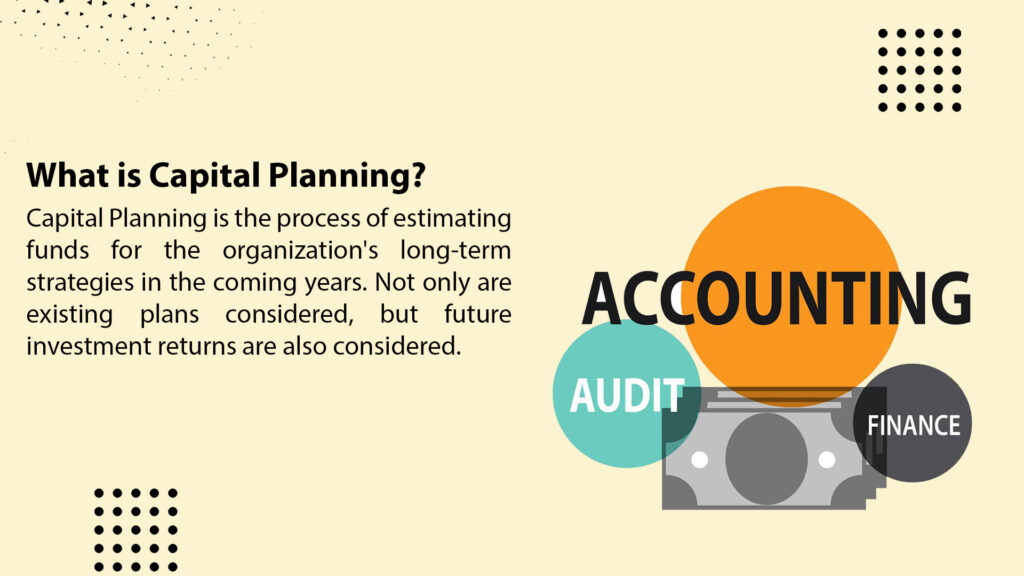Capital Planning is the process of estimating funds for the organization’s long-term strategies in the coming years. Not only are existing plans considered, but future investment returns are also considered.
“There is always plenty of capital in use for those who can create practical plans for using it.” (Hill) –Napoleon Hill
Preferably, companies would undertake any and all developments and prospects that maximize shareholder value and financial gains. However, because the amount of funds or cash given to new projects in any company is scarce, the organisation employs a capital planning approach to detect which initiatives will give maximum profit over a given period.
Why do businesses need to plan capital?
Capital planning is both a cash flow and a monetary decision. By working on a team, the company makes capital planning, but it is also looking to invest in its long-term path, which will probably have an impact on future ambitions considered by the business. Here are some importance of capital planning:
1. Long-Term Cash flow Impact
A long-term vision is required for any company’s wealth and success, because a bad decision can have a major impact on the company’s continued existence, which can affect capital planning in the long run. Not only that, but it also has a consequence on the company’s future costs and growth.
2. Facilitates Investment Decision Making
Capital Investment are Long-term and time-consuming because they take numerous years to accomplish beyond the current period. Unpredictability characterises the risk’s involvement in it. When making this decision, leadership loses flexibility and liquidity of resources. It must be taken into account when receiving the recommendation.
3. Maximization of Capital
Capital Planning encourages the organisation to spend in long-term investments in order to protect the interests of the organization’s shareholders. If the organization spends in individual projects on a regular basis, the shareholders will demonstrate their influence on the organization. It will assist them in maximising the organization’s performance. Any organizational development is also linked to the firm’s development, revenues, and profitability.
Steps to Successful Capital Planning
1. Make Your Strategy Realistic
A comprehensive review of the previous five-year financial statements and results of operations is essential to understanding prospective cash requirements and project success factors, as well as a macro perspective of your company’s business and product repetitions. Dream big, but have a strategy in place to bring your company’s objectives to full potential.
2. Create a five-year strategic plan for your company
Plans and preferences are required, and instruments such as Capital Planning development tools can assist you in estimating financing needs and aligning them with the strategic and long goals.
3. Financial Simulation
Financial projections measure the effects of investment, ground your figures in historical results, and provide policymakers with convenient financial statements and overviews of the potential for capital necessities and continues to gain as projects progress.
4. Push ahead
It’s now time to get organised. Follow the rules and policies that have been provided to you, and record, study, prototype, and reveal your strategy. Obtain approval, submit monthly reports, and meet your objectives.






